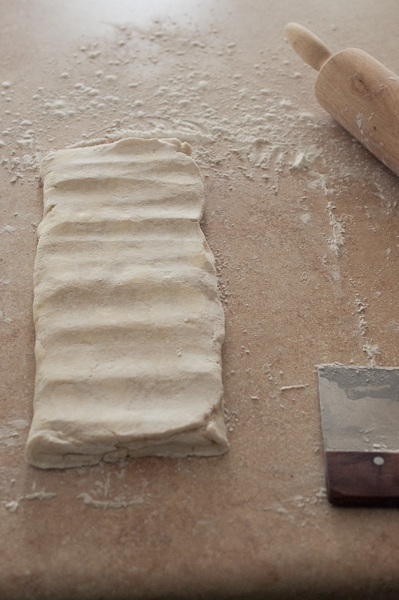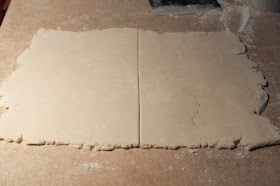This past weekend, I helped throw a baby shower for my friend Mary. She & her husband are expecting their first baby (a boy!) in August. We’re really so excited for them.
In honor of Mary & baby, we threw a brunch baby shower with copious amounts of amazing food, a mimosa bar (with sparkling juice for the expectant ladies), tasteful games & lots and lots of laughter! There’s nothing quite like a good celebration! Birthdays, weddings, anniversaries, babies, just because.... I’ll take any excuse for a party. I especially like the celebrations that have specific themes AND involve real paper invitations :)
Way back in the planning stages, I was given three specific “tasks” to oversee for the shower 1) the paper products (like the invitations, food tags, signs, etc.) 2) making some of my favorite croissants and 3) thank you favors for the ladies attending to take home with them. Paper products, croissants & favors happen to be three of my favorite things! I had SO much fun with the preparations for this shower.
The bedding Mary picked out for the baby had really adorable dinosaurs on it. The colors from the bedding & those dinosaurs became the inspiration for the paper products & the favors.
Originally, we had planned to do chocolate chip cookies for the favors. But on a recent trip to San Antonio, I found adorable dinosaur cookie cutters at Hobby Lobby, and I was able to convince the other host-ladies to let me do decorated dinosaur cookies instead. I packaged the cookies so that each shower attendee received a brontosaurus cookie and either a stegosaurus or a t-rex.
I’ve done a fair number of cookie designs, but these cute dinosaurs might be some of my favorites.... They do take a bit of planning & time, but are totally worth it in the end! Here’s how I created them.
- My cookie workflow is this...
- Day 1: make the dough.
- Day 2: roll out & bake the cookies. Store in an airtight container overnight.
- Day 3: make icing, outline & flood cookies.
- Day 4: add any intricate details.
- Day 5: package & deliver cookies.
- If you’d like to reference my favorite cookie recipe, read this post .
- The royal icing I use comes from Callye at Sweet Sugar Belle.
- I always use AmeriColor Soft Gel Paste Food Color
to dye my icing
- I only color as much icing as I need for each specific step & I always hold back a little original white icing in case I need to make icing thicker.
- Last christmas I started putting my icing into plastic wrap packets before putting them into the pastry bags & that technique has been life changing! So much easier & less messy (plus, I can easily re-use pastry bags).
- Store any leftover icing in the refrigerator. I never like to throw away any remaining icing until the cookies are all done, just in case of any accidents. Murphy’s Law does seem to love me....
Brontosaurus cookies
Colors used: sky blue, leaf green and a tiny bit of chocolate brown to make the body color, plus white for the dots and the eyes & super black for the pupils.
- Color enough icing to both outline and “flood” the cookies. Cover with wet paper towels so that the icing does not begin to dry.
- Outline the cookies with a Wilton #2 tip. Allow the outline to dry for at least 30 minutes.
- Thin down the remaining icing to make a flooding consistency & pour the icing into a squeeze bottle. Also prepare a little white icing, also flooding consistency, to make the white dots. Make a plastic packet of the white flooding icing & use it in a pastry bag fitted with a Wilton #1 tip.
- Flood the outlined cookies with the thinned royal icing. Use a toothpick to help move the icing out to the edges. Flood three to four cookies in one batch. Go back over each cookie & run a tooth pick through the icing to dislodge any bubbles. Use the tip of the toothpick to pop any bubbles. Immediately use the flooding white icing to make dots along the back of the dinosaur. Remember that the white will spread, so do not place the dots too close together (or they might bleed or connect to each other).
- Allow the cookie to dry overnight in a low humidity area.
- To finish, once the icing has dried completely, take a little white icing (about the same consistency as the outlining icing is) & add little white dots for eyes. Allow to dry 30 minutes. Add tiny black dots on top of the white dots to make the pupils of the eyes. I usually put my icing into a parchment paper cone & just barely cut off the tip to pipe the eyes & pupils.
Stegosaurus Cookies
Colors used: Lemon yellow with a tiny bit of chocolate brown to make the body color. The leftover lemon yellow/chocolate brown with a little orange added to make the dots & the spikes. White for the eyes & super black for the pupils.
- Color enough icing to outline and “flood” the cookies. Cover with wet paper towels so that the icing does not begin to dry.
- Outline the cookies with a Wilton #2 tip. do not outline the individual spikes--instead make an arc underneath where the spikes would begin. Allow the outline to dry for at least 30 minutes.
- Thin down the remaining icing to make a flooding consistency & pour the icing into a squeeze bottle.
- Flood the outlined cookies with the thinned royal icing. Use a toothpick to help move the icing out to the edges. Flood four to six cookies in one batch. Go back over each cookie & run a tooth pick through the icing to dislodge any bubbles. Use the tip of the toothpick to pop any bubbles.
- Allow the cookie to dry overnight in a low humidity area.
- The following day, mix the remaining yellow icing with some white original icing to make a thicker consistency that does not flow as much... More of a “20 second” icing {LINK}. To the icing add a little orange & some additional chocolate brown to make the spike color.
- Make a plastic packet of the icing & use it in a pastry bag fitted with a Wilton #1 tip.
- Pipe the spike pattern & add dots over the back arch of the yellow body. Use a toothpick as necessary to spread the icing and/or pop any bubbles. Allow to dry.
- To finish, take a little white icing (about the same consistency as the outlining icing is) & add little white dots for eyes. Allow to dry 30 minutes. Add tiny black dots on top of the white dots to make the pupils of the eyes. I usually put my icing into a parchment paper cone & just barely cut off the tip to pipe the eyes & pupils.
T-Rex cookies
Colors used: Leaf green with a lemon yellow and a little chocolate brown to make the body. Additional lemon yellow added to the remaining icing to make the green stripes. White for the eyes & super black for the pupils.
- Color enough icing to outline and “flood” the cookies. Cover with wet paper towels so that the icing does not begin to dry.
- Outline the cookies with a Wilton #2 tip. Allow the outline to dry for at least 30 minutes.
- Thin down roughly 3/4 of the remaining icing to make a flooding consistency & pour the icing into a squeeze bottle.
- Flood the outlined cookies with the thinned royal icing. Use a toothpick to help move the icing out to the edges. Flood four to six cookies in one batch. Go back over each cookie & run a tooth pick through the icing to dislodge any bubbles. Use the tip of the toothpick to pop any bubbles.
- Allow the cookie to dry overnight in a low humidity area.
- Take the remaining quarter of the green icing & add some additional lemon yellow & a little white to make a contrasting yellow green color. Thin the icing to make a a “20 second” consistency icing {LINK}. Make a plastic packet of the icing & use it in a pastry bag fitted with a Wilton #1 tip.
- Pipe triangle-shaped stripes along the back of the dinosaur. Use a toothpick as necessary to spread the icing and/or pop any bubbles. Allow to dry.
- To finish, take a little white icing (about the same consistency as the outlining icing is) & add little white dots for eyes. Allow to dry 30 minutes. Add tiny black dots on top of the white dots to make the pupils of the eyes. I usually put my icing into a parchment paper cone & just barely cut off the tip to pipe the eyes & pupils.























































